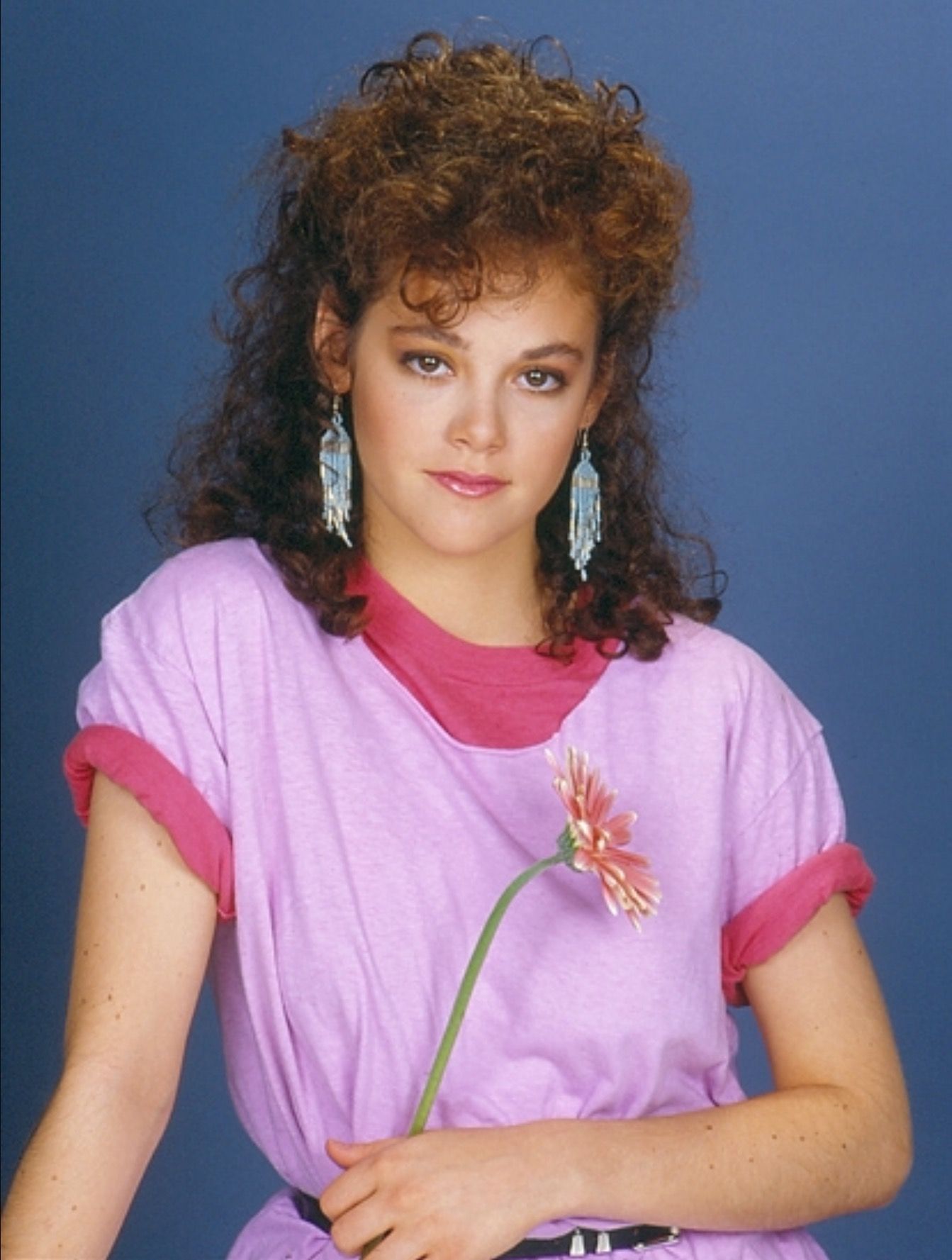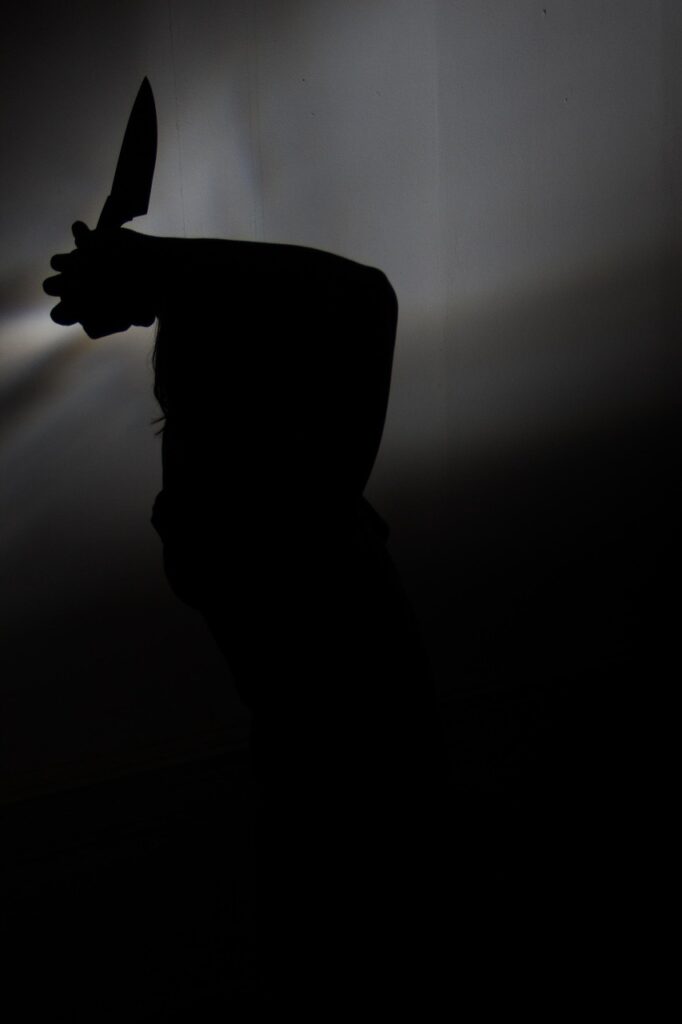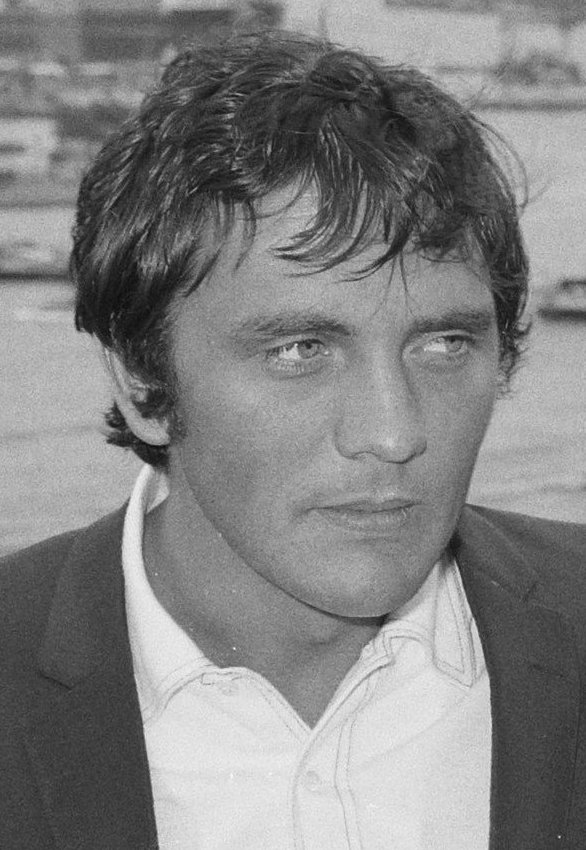
The summer of 1989 arrived with the promise of long days and a burgeoning sense of possibility, a time when cultural shifts were subtly reshaping the landscape of American life and entertainment. For Rebecca Schaeffer, a vibrant and rapidly ascending actress, that summer held the particular anticipation of a potentially career-defining audition for Francis Ford Coppola’s “The Godfather Part III.” At just 21 years old, Schaeffer embodied the quintessential Hollywood dream, a young woman whose talent and charm had already captivated audiences and placed her on the precipice of even greater stardom.
Yet, beneath the glittering surface of Tinseltown’s aspirations, a darker current ran, one fueled by obsession and a dangerous erosion of personal boundaries. Her story, tragically interwoven with the actions of a disturbed fan named Robert John Bardo, would not only extinguish a bright light but also ignite a profound and necessary reckoning within the legal system and the entertainment industry. It would force a nation to confront the stark realities of celebrity vulnerability and the chilling ease with which an individual’s private life could be irrevocably breached.
This article will meticulously retrace the trajectory of Rebecca Schaeffer’s life and the insidious development of the obsession that claimed it, delving into the precise sequence of events that culminated in a tragedy that sent shockwaves across the country. We will explore her early ambitions, her professional ascent, and the chilling details of how Robert Bardo, a 19-year-old from Arizona, meticulously dismantled her sense of safety, forever changing the way American law perceives and combats the insidious threat of stalking.
1. **Rebecca Schaeffer’s Early Life and Aspirations**
Rebecca Lucile Schaeffer, born on November 6, 1967, in Eugene, Oregon, was the only child of Danna (née Wilner), a writer and instructor at Willamette University and Portland Community College, and Dr. Benson Schaeffer, a child psychologist. Raised in Portland and brought up Jewish, she initially harbored aspirations of becoming a rabbi. However, her path would soon veer toward the performing arts, setting the stage for a tragically brief but impactful career.
Her entry into the public eye began during her junior year in high school, when she transitioned into modeling. She quickly found work, appearing in department store catalogues and television commercials, and even as an extra in a television film. In 1984, at the tender age of 16, Schaeffer spent a summer working in New York City with Elite Model Management. With her parents’ permission, she made the courageous decision to stay in the city, fully committing to her burgeoning modeling career.
While pursuing modeling in New York, Schaeffer also attended the Professional Children’s School, balancing her education with her professional endeavors. It was during this period that she landed a short-term role on the popular daytime soap opera, “Guiding Light.” Despite her initial successes, the world of high-fashion modeling proved challenging due to her height, as she was considered too short at 5 ft 7 in. This led her to seek opportunities abroad, moving to Japan in 1985, but still encountering difficulties. Upon her return to New York City, she made a pivotal decision to pivot her focus entirely to an acting career.
Her father, Benson Schaeffer, reflected on her remarkable aptitude, noting, “She was sort of a mystery because if she wanted to do something, she could do it.” He added, “She really sort of learned by looking and doing and it was easy.” Nannette Troutman, Schaeffer’s first agent, expressed her immediate impression, stating, “I knew I wanted to sign this little girl so bad… She was just a very, very special young lady.” These insights paint a picture of a uniquely talented and determined young woman. Her time in New York City, despite the challenges, was recalled by her father as an “extremely happy” period in her life, a testament to her passion and optimism.
2. **The Rise to Stardom: “My Sister Sam”**
Rebecca Schaeffer’s acting career began to gain traction, though not without its early hurdles. In 1986, she secured a small role in Woody Allen’s acclaimed comedy, “Radio Days.” However, her character was largely edited out, leaving her with only one brief scene in the final cut. Undeterred, she continued to model and also worked as a waitress, steadfast in her pursuit of a breakthrough.
That breakthrough arrived when she graced the cover of “Seventeen” magazine. This appearance captured the attention of television producers who were in the process of casting for a new comedy series, “My Sister Sam,” which was set to star Pam Dawber. Schaeffer’s talent and fresh appeal resonated with them, leading to an audition that would change her trajectory.
She ultimately won the coveted role of Patricia “Patti” Russell, a pivotal character in the CBS sitcom. Patti was depicted as a teenager from Oregon who moves to San Francisco to live with her older, 29-year-old sister Samantha (“Sam”) after the tragic death of their parents. This role provided Schaeffer with a national platform and quickly made her a recognizable face in American households.
During her time on the series, Schaeffer lived with her co-star, Pam Dawber, fostering a close relationship that extended beyond the set. “My Sister Sam” initially proved to be a significant success, ranking in the top 25 during its run. However, despite its promising start, the series experienced a decline in ratings and was ultimately canceled halfway through its second season in April 1988, bringing an end to Schaeffer’s first major network television role. An interview with ET in 1987 revealed her perspective on her burgeoning career, where she stated, “I still have other interests. I still love archaeology and physics. I really love the sciences a lot. I think about going back to school. But I love what I’m doing so much… That’s what makes me stay here.” This quote profoundly illustrates her genuine enthusiasm for her craft, even as she remained grounded in other intellectual pursuits.
3. **The Shifting Landscape of Her Career**
Following the cancellation of “My Sister Sam,” Rebecca Schaeffer swiftly pivoted her focus to securing supporting roles in various films, signaling her ambition to transition into a more diverse and mature acting career. She appeared in “Scenes from the Class Struggle in Beverly Hills,” a black comedy that, unbeknownst to her, would later become a critical piece in the tragic narrative of her life. Her filmography during this period also included “Voyage of Terror: The Achille Lauro Affair,” a television movie, and “The End of Innocence,” a semi-autobiographical drama that marked screen icon Dyan Cannon’s directorial debut. She also featured in the television film “Out of Time.”
Beyond her burgeoning acting roles, Schaeffer dedicated some of her time to philanthropic endeavors, serving as a spokesperson for the children’s charity Thursday’s Child. This commitment reflected a compassionate side, showcasing her desire to use her growing platform for positive impact. Her personal life, too, was blossoming; she had established an independent residence in the Fairfax District of Los Angeles, where she lived alone.
During this vibrant period of her life, she was also dating Brad Silberling, a UCLA film student who would later achieve success as a TV and movie director. This blend of professional ambition and personal fulfillment painted a picture of a young woman confidently navigating her twenties. Her filmography from this transitional period clearly illustrates her deliberate move away from the teen sitcom genre, indicating a desire to challenge herself with more complex and varied characters.
The roles she undertook after “My Sister Sam,” particularly her performance in “Scenes from the Class Struggle in Beverly Hills,” were instrumental in demonstrating her versatility. However, it was precisely this artistic evolution, this embrace of more adult-oriented characters, that would be tragically misinterpreted and weaponized by an observer whose admiration had curdled into a dangerous fixation. The very path she chose for artistic growth would, in a cruel twist of fate, contribute to the horrific events that lay ahead.
Read more about: Political Intrigue: Unpacking the 14 Reasons Why Prominent Figures Are Steering Clear of Presidential Endorsements
4. **Robert Bardo’s Obsession Takes Root**
The insidious shadow that would eventually eclipse Rebecca Schaeffer’s bright future began to form in the mind of Robert John Bardo, a 19-year-old from Tucson, Arizona. Bardo’s pattern of obsessive fixation was not new; he had previously been consumed by an infatuation with child peace activist Samantha Smith, who tragically died in a plane crash in 1985. Following Smith’s death, his attention, disturbingly, shifted to Rebecca Schaeffer, whose wholesome image on “My Sister Sam” resonated with his twisted perceptions.
Bardo began by writing numerous letters to Schaeffer, expressing his fervent admiration. In a gesture that was then considered a common and even gracious response from celebrities, Schaeffer answered one of his letters, unknowingly fueling his already unstable delusion of a personal connection. This single act of kindness, intended as a simple fan interaction, was tragically misinterpreted by Bardo as encouragement, further cementing his belief in a bond that did not exist.
His obsession escalated in 1987, prompting him to travel to Los Angeles with the explicit intention of meeting Schaeffer on the set of “My Sister Sam.” However, the security personnel at Warner Bros. effectively turned him away, preventing any direct contact. Undeterred, Bardo returned to the studio a mere month later, this time brazenly armed with a knife. Once again, security guards intercepted him, preventing him from gaining access to the actress.
These early attempts, while thwarted, revealed the alarming persistence and escalating danger of Bardo’s fixation. Following these failures, he returned to his native Tucson. For a period, his intense focus on Schaeffer seemed to wane, as his obsession momentarily shifted towards other pop singers of the era, including Tiffany, Debbie Gibson, and Madonna. This temporary diversion, however, proved to be merely a pause before his full, devastating attention would return to Schaeffer with an even more violent intensity.

5. **The Escalation of Bardo’s Fixation**
The temporary reprieve from Robert Bardo’s attention proved short-lived, and his obsession with Rebecca Schaeffer reignited with a terrifying ferocity in 1989. The catalyst for this renewed and intensified fixation was Bardo’s viewing of Schaeffer in the black comedy film, “Scenes from the Class Struggle in Beverly Hills.” In this particular role, Schaeffer appeared in a scene portraying her character in bed with another actor. This depiction, a normal artistic endeavor for an actress pursuing diverse roles, was perversely interpreted by Bardo as a personal affront.
He became intensely enraged by the scene, consumed by a distorted sense of jealousy and possessiveness. In his twisted reality, Schaeffer’s portrayal of a more mature character, one that challenged his idealized image of her, represented a profound betrayal. It was at this juncture that his admiration curdled into a violent desire for retribution. He chillingly decided that Schaeffer should be punished, rationalizing his impending actions by concluding that she had “becoming another Hollywood .”
This shift from a delusional admirer to a vengeful aggressor marks a critical and deeply disturbing turning point in Bardo’s psychological trajectory. It reveals the dangerous fragility of his initial admiration, which was predicated not on genuine connection, but on a rigid, idealized projection that Schaeffer, as a real person, could never fulfill. When reality diverged from his fantasy, his response was not disappointment, but a terrifying and possessive rage.
The film’s director, Dyan Cannon, who had also directed Schaeffer in “The End of Innocence,” later reflected on the shocking incomprehensibility of such an act. “When I found out how Rebecca was murdered… I was staggered because I don’t think at that time we thought about stalking so much,” Cannon expressed, highlighting the societal naiveté regarding the dangers of stalking at the time. “‘This guy followed her? This guy went to her condo and she opened the door and he shot her and killed her and she’s dead?’… In that time was unthinkable.” Cannon’s words underscore how unimaginable such a targeted, fan-driven violence was, and how Schaeffer’s tragedy served as a brutal awakening to a new form of threat.

6. **The Chilling Acquisition of Her Address**
With his rage intensified and a twisted mission solidified, Robert Bardo set about meticulously planning his attack. A crucial step in his deadly scheme was obtaining Rebecca Schaeffer’s home address, a task he undertook with chilling deliberation. He learned of a precedent that would guide his actions: the case of Arthur Richard Jackson, who had stalked and stabbed actress Theresa Saldana in 1982. Critically, Bardo discovered that Jackson had successfully used a private investigator to obtain Saldana’s unlisted address. This provided him with a grim but effective blueprint.
Armed with this knowledge, Bardo proceeded to pay a detective agency in Tucson $250. His request was simple yet terrifying: to find Schaeffer’s home address. At the time, an alarming loophole existed within California’s Department of Motor Vehicles (DMV) records, making it astonishingly easy for private investigators to access such private information. This systemic flaw meant that a person’s personal data, including their residential address, could be obtained with relative ease and for a nominal fee.
Marcia Clark, who would later prosecute Bardo, brought this disturbing fact to light during the trial, calling the private detective agency owner to the stand. Clark laid bare the shocking simplicity of the process, stating, “He went to a private eye and said, ‘I need to find this person,’… And it was that easy.” This revelation sent shockwaves through the public and highlighted a profound vulnerability in privacy laws that celebrities, and indeed any citizen, faced. It was a stark demonstration of how readily personal security could be compromised through legitimate, albeit ethically dubious, channels.
Having successfully acquired Schaeffer’s private address, Bardo then took the final, horrifying step in his preparation. With the assistance of his brother, he obtained a Ruger GP100 .357 revolver. The procurement of the weapon, combined with the successful circumvention of privacy protections, marked the chilling culmination of his premeditated plan. Each step, from the initial obsession to the acquisition of the gun and address, underscored the methodical and determined nature of his intent, laying the groundwork for the unspeakable tragedy that would soon unfold.
Read more about: Unearthing the Truth: The Compelling Saga of Nicolas Cage’s $276,000 T-Rex Skull and the Philosophical Quest It Ignited

7. **The Fateful Day: July 18, 1989**
July 18, 1989, began like any other day in the bustling life of an aspiring Hollywood actress. Rebecca Schaeffer was at her home in West Hollywood, preparing for what could have been a monumental moment in her career: an audition for Francis Ford Coppola’s “The Godfather Part III.” She was eagerly awaiting the delivery of a screenplay, a crucial component for her preparation, adding a layer of professional anticipation to her morning. This context of hopeful ambition makes the events that followed all the more tragically poignant.
However, the doorbell that rang was not that of a messenger with a script. Instead, it was Robert John Bardo, who had journeyed seven hours by bus from his home in Arizona, his twisted purpose solidified. He had meticulously roamed the neighborhood, asking residents if Schaeffer indeed lived at the address he possessed, confirming his target’s location before making his move. When Schaeffer answered the door, expecting a professional delivery, she was confronted by her stalker.
Bardo presented her with a letter and an autograph that she had previously sent him, a tangible link to his past attempts at connection. After a brief conversation, which Schaeffer likely intended to be a polite but firm dismissal, she asked him not to come to her home again. This interaction underscores the vulnerability of public figures, often forced into uncomfortable encounters with strangers whose intentions are unknown. Schaeffer then continued waiting for the script that might have led to a life-altering casting for the young actress, unaware of the lurking danger.
Following this initial encounter, Bardo retreated to a nearby diner, where he calmly had breakfast. This seemingly mundane act in the immediate aftermath of his confrontation with Schaeffer only further emphasizes the cold deliberation of his intentions. The interlude, lasting approximately an hour, offered him time not for reconsideration, but presumably for marshaling his resolve to complete his horrific agenda.
An hour later, Bardo returned to Schaeffer’s apartment, ringing the doorbell for a second, fateful time. According to Bardo’s later taped confession in 1991, Schaeffer answered the door with “a cold look on her face,” a clear indication of her frustration and discomfort at his unwelcome return. In addition to the fan mail, Bardo was carrying a headshot-type photo of Schaeffer, the .357-caliber handgun, and a copy of J.D. Salinger’s “The Catcher in the Rye” – a chilling and disturbing detail, as this same book was infamously found on Mark David Chapman when he murdered John Lennon nine years prior, linking Bardo’s act to a grim lineage of celebrity violence.

8. **The Murder and Its Immediate Aftermath**
The short respite Robert Bardo allowed himself at a nearby diner concluded, and he returned to Rebecca Schaeffer’s West Hollywood apartment an hour after his initial unwelcome visit. As the doorbell rang for a second time, Schaeffer, likely expecting the screenplay for her pivotal audition for “The Godfather Part III,” opened the door. Her expression, according to Bardo’s later confession, was one of “a cold look on her face,” a clear signal of her frustration with his persistent presence.
This second encounter rapidly devolved into tragedy. Bardo, who had been carrying a headshot-type photo of Schaeffer, the .357-caliber handgun, and disturbingly, a copy of J.D. Salinger’s “The Catcher in the Rye”—a book infamously found on Mark David Chapman after he murdered John Lennon—pulled out the weapon. He fired a single shot into Schaeffer’s chest at point-blank range in her doorway. In her final moments, as she collapsed, Bardo claimed she repeatedly cried out, “Why? Why?”
Bardo immediately fled the scene, boarding another bus to Tucson, Arizona, in a desperate attempt to escape justice. However, Schaeffer’s neighbors, alerted by the gunshot and her piercing screams, quickly gathered at her side, providing what comfort they could until emergency responders arrived. She was rushed to the Cedars-Sinai Medical Center, located only blocks away, but was tragically pronounced dead a mere 30 minutes after her arrival, the gunshot wound having pierced her heart.
The manhunt for Bardo was swift and decisive. The very next day, Tucson Police Chief Peter Ronstadt apprehended him after motorists reported a man running erratically through traffic on Interstate 10. Upon his arrest, Bardo immediately confessed to the murder, reportedly shouting, “I killed Rebecca Schaeffer,” laying bare the grim culmination of his years-long, twisted obsession.
Read more about: Beyond the Spotlight: Unpacking the Controversies and Boycotts Plaguing Lady Gaga’s Cinematic Ventures
9. **Robert Bardo’s Capture and Trial**
Following his capture and immediate confession in Tucson, Robert Bardo was extradited to Los Angeles, where the legal proceedings for Rebecca Schaeffer’s murder began. The case, quickly attracting significant public and media attention, was assigned to then-Deputy District Attorney Marcia Clark, who would later achieve global recognition as the lead prosecutor in the O. J. Simpson murder trial. Clark, reflecting on the two-year court saga in 1997, noted that Bardo’s case served as a poignant training ground for navigating the intense media frenzies that often accompany high-profile celebrity crimes.
Bardo’s defense ultimately opted for a judge-only ruling, foregoing a jury trial. Central to their strategy was a schizophrenia diagnosis, which aimed to mitigate the premeditation of his actions. However, Clark meticulously argued that Bardo’s meticulously planned steps leading up to Schaeffer’s murder, including his repeated attempts to contact her and the calculated acquisition of her address and weapon, unequivocally demonstrated a clear intent and premeditation that transcended any mental health challenges.
During the 1991 trial, significant revelations came to light regarding Bardo’s prior attempts to contact Schaeffer. Clark called the head of Warner Bros. studio security to the stand, who testified that Bardo had unsuccessfully tried to approach Schaeffer multiple times at the Burbank backlot while “My Sister Sam” was in production. “Security had actually seen him come to the studio a few times. Bringing her flowers. A teddy bear. All kinds of things,” Clark remembered, highlighting the then-underestimated nature of such threats. She added, “Given what people knew back then, the guards’ lack of apprehension was understandable. People just didn’t realize that stalkers don’t necessarily show how they feel.”
Perhaps the most unsettling revelation concerned the ease with which Bardo had acquired Schaeffer’s unlisted home address. Clark, during the trial, brought the private detective agency owner to the stand, exposing how a common, yet ethically dubious, DMV service at the time allowed individuals to ascertain private residential addresses. “He went to a private eye and said, ‘I need to find this person,’… And it was that easy,” Clark stated, underscoring a profound systemic vulnerability. Ultimately, Bardo was convicted of first-degree aggravated murder in the bench trial and sentenced to life in prison without the possibility of parole.

10. **The Shockwaves and Public Reaction**
The brutal murder of Rebecca Schaeffer sent profound shockwaves through Hollywood and across the nation, exposing a chilling vulnerability that many had previously failed to grasp. Dyan Cannon, who had directed Schaeffer in “The End of Innocence,” vividly articulated the collective incomprehension, stating, “When I found out how Rebecca was murdered… I was staggered because I don’t think at that time we thought about stalking so much.” She continued, recounting the then-unfathomable nature of such a crime: “‘This guy followed her? This guy went to her condo and she opened the door and he shot her and killed her and she’s dead?’… In that time was unthinkable.”
Indeed, while celebrity violence was not entirely unprecedented—John Lennon’s murder in 1980 by an obsessed fan, Mark David Chapman, and Ronald Reagan’s attempted assassination by John Hinckley Jr., fixated on Jodie Foster, being prominent examples—Schaeffer’s case carried a distinct and deeply disturbing dimension. Unlike those public acts of violence, Schaeffer’s murder was an invasion of her most private sanctuary, her home, facilitated by a systemic breach of privacy. It forced a harsh spotlight on the insidious nature of stalking, which, prior to her death, was often dismissed or misunderstood.
The public’s initial reaction was a mixture of grief for a promising young life cut short and a palpable sense of unease. The realization that a seemingly innocuous act of fandom could curdle into deadly obsession, culminating in a targeted attack at one’s own front door, fundamentally shifted perceptions. It shattered the illusion of a secure boundary between public persona and private life, compelling both the entertainment industry and the broader society to confront the severe dangers posed by unchecked, delusional admiration. This tragedy served as a brutal awakening to a new, deeply personal form of threat.
Read more about: The One Question That Made Tom Cruise Storm Off Set: Unpacking the Tense Interview Moment That Left Fans Divided
11. **Landmark Legislative Changes: The Driver’s Privacy Protection Act**
One of the most astonishing and deeply troubling aspects revealed during the investigation and trial of Robert Bardo was the alarming ease with which he obtained Rebecca Schaeffer’s private home address. This was not the result of sophisticated hacking or illicit espionage but rather the exploitation of a gaping loophole within California’s Department of Motor Vehicles (DMV) records. Bardo had simply paid a private detective agency in Tucson $250, and they, in turn, accessed Schaeffer’s unlisted address through this legitimate, albeit profoundly flawed, DMV service.
The revelation that a person’s residential address could be so readily obtained for a nominal fee sent shockwaves through the public and, critically, within the entertainment community. It highlighted a universal vulnerability, impacting not just celebrities but anyone whose personal information was held within public databases. “It hit home to everyone who drives a car that the person you inadvertently cut off and upset could jot down your license plate number, go to the DMV, get your address, and be waiting with a gun or a knife (outside your house),” observed journalist Patrick Healy.
In the immediate aftermath of Schaeffer’s murder, her “My Sister Sam” co-star, Pam Dawber, became a fierce advocate for privacy reform. Dawber, along with her husband, actor Mark Harmon, had experienced their own unsettling encounters with obsessed fans, making them acutely aware of the necessity for systemic change. Harmon famously articulated the absurdity of the situation to ET in September 1989, stating, “It’s pretty silly stuff to think that anybody’s personal information can be obtained by any bull story.”
Their determined lobbying efforts, combined with intense public pressure, culminated in a landmark legislative change. In 1994, the Driver’s Privacy Protection Act (DPPA) was enacted at the federal level. This crucial law severely restricted public access to personal information contained within DMV records, specifically preventing the release of private addresses. Schaeffer’s tragic death directly catalyzed this reform, fundamentally reshaping privacy protections and creating a more secure environment for all citizens, not just public figures.
12. **Landmark Legislative Changes: Anti-Stalking Laws**
Beyond the critical changes to DMV privacy regulations, Rebecca Schaeffer’s murder also served as the powerful impetus for the establishment of the United States’ first anti-stalking laws. Prior to 1990, stalking was not recognized as a specific crime, leaving victims with limited legal recourse against persistent and threatening harassment. The horror of Schaeffer’s meticulously planned murder, revealing the deadly potential of obsessive pursuit, brought this alarming legal void into stark relief.
In response, California swiftly enacted the country’s first anti-stalking legislation, California Penal Code 646.9, in 1990. This groundbreaking law formally established stalking as a criminal offense, providing law enforcement and prosecutors with the necessary tools to intervene before obsessions escalated to violence. It defined stalking as a pattern of conduct that causes a person to fear for their safety or the safety of others, encompassing actions like repeatedly following or harassing another person.
Within years, the profound impact of this pioneering legislation was evident. Schaeffer’s death ignited a national anti-stalking movement, leading to similar laws being instituted in all 50 states. This widespread adoption demonstrated a collective societal recognition of stalking as a serious and dangerous crime, demanding a robust legal framework to protect potential victims. The tragedy also prompted the launch of a new Los Angeles Police Department unit specifically focused on stalking investigations, signifying a critical shift in how such threats were perceived and managed by law enforcement.
These legislative reforms fundamentally altered the legal landscape, providing crucial protections that were entirely absent during Schaeffer’s ordeal. Her case transformed a largely unrecognized pattern of psychological abuse into a legally actionable offense, thereby creating a vital barrier against the type of escalating obsession that tragically claimed her life. The establishment of anti-stalking laws stands as one of the most significant and enduring legacies of her profound and untimely death.

13. **Hollywood’s Evolving Response and Celebrity Safety**
Rebecca Schaeffer’s murder served as an undeniable “wake-up call” for the entertainment industry, fundamentally altering how Hollywood perceived and addressed threats to celebrity safety. Prior to 1989, incidents of obsessive fan behavior, while perhaps unsettling, were rarely viewed with the gravity that they are today. The systematic, years-long pattern of Robert Bardo’s fixation, escalating from letters to direct attempts to contact Schaeffer on set, and ultimately to her murder, provided a chilling blueprint of warning signs that security professionals now meticulously monitor.
In the aftermath of the tragedy, there was a dramatic increase in awareness regarding the potential dangers posed by stalkers. “Since then, everybody has had their awareness raised,” Marcia Clark noted years later, emphasizing a profound shift in understanding. “They understand that stalking is a dangerous crime.” This newfound comprehension led to a comprehensive reevaluation of security protocols for actors and public figures. Studio security measures, which had previously dismissed Bardo’s attempts to reach Schaeffer with flowers and teddy bears as mere fan enthusiasm, were significantly tightened.
The incident underscored the necessity for robust privacy protections and more proactive measures against potential threats. Celebrities, their agents, and production companies began taking fan interactions, especially those exhibiting signs of obsession, far more seriously. The once common practice of stars casually interacting with fans or having their addresses easily discoverable became untenable. This cultural shift within Hollywood meant a greater investment in personal security, a more cautious approach to public accessibility, and a heightened vigilance against individuals who cross the line from admirer to aggressor.
Schaeffer’s death marked a pivotal moment, transforming how the industry conceived of and actively managed the risks inherent in fame. It solidified the understanding that the boundaries between public admiration and private safety must be rigorously defended, establishing a new paradigm for celebrity protection that continues to evolve in the face of modern threats.
Read more about: The Sony Pictures Email Leak: Unveiling Internal Strife, Corporate Misconduct, and Hollywood’s Unseen Challenges
14. **The Enduring Personal Impact: Brad Silberling’s “Moonlight Mile”**
Amidst the broad societal and legislative changes spurred by Rebecca Schaeffer’s death, there remained a deeply personal and enduring impact on those closest to her. Among them was Brad Silberling, a UCLA film student she was dating at the time of her murder, who would later achieve success as a TV and movie director. Schaeffer’s tragic passing left Silberling grappling with immense grief and trauma, an experience he would later channel into a poignant artistic endeavor.
Years after the murder, Silberling wrote and directed the 2002 film “Moonlight Mile,” a critically acclaimed independent drama directly inspired by his harrowing experience. The movie explores the profound grief of a young man whose fiancée is murdered, focusing on his complex relationship with her parents in the aftermath. It subtly delves into the trauma bonding that can occur between survivors of such a devastating loss, depicting how shared sorrow can forge an unexpected, yet enduring, connection.
“Moonlight Mile” starred pre-fame Jake Gyllenhaal and Ellen Pompeo, with seasoned actors Dustin Hoffman and Susan Sarandon portraying surrogate versions of Schaeffer’s grief-stricken mother and father. Silberling described the film as “a valentine to the experience and to her family. It’s a valentine to her,” illustrating his intention to honor Rebecca’s memory and the profound bond he developed with her parents, Danna and Benson Schaeffer, through their shared heartbreak. This artistic expression served as a powerful testament to the enduring human cost of the tragedy.
The film captured not only the raw emotion of loss but also the subtle complexities of navigating grief in the public eye, offering audiences a window into the private anguish that underpinned the widely reported crime. Silberling’s courage to transform his personal tragedy into a piece of cinema provided a unique and deeply moving tribute, ensuring that Rebecca’s story, beyond its legal and social ramifications, continued to resonate on an intensely human level.

15. **Rebecca Schaeffer’s Legacy in the 21st Century**
Thirty-five years after her untimely death, Rebecca Schaeffer’s story remains a poignant and critical touchstone in discussions surrounding celebrity safety and the dangers of stalking. Her case has solidified its place as a “go-to cautionary tale” for celebrities, a stark reminder of the ever-present threat lurking beneath the surface of fame. The relevance of her tragedy was starkly underscored in 2016, when numerous social media posts, like the chilling tweet, “Rebecca Schaeffer was shot and killed by her stalker 27 years ago. Nothing’s changed. #ChristinaGrimmie,” drew direct parallels to the murder of 22-year-old YouTube singing sensation Christina Grimmie.
Grimmie, like Schaeffer, was gunned down by an obsessed fan who had harbored a years-long infatuation, reaffirming that the core vulnerability identified decades prior continued to exist. This tragic continuum highlights the persistent challenges in fully eradicating the threat of stalking, despite the significant legislative and security advancements inspired by Schaeffer’s case. The digital age, with its pervasive connectivity, has only amplified these concerns, creating new avenues for obsessive individuals to track and harass their targets.
Public figures continue to voice their concerns, echoing the lessons learned from Schaeffer’s ordeal. Paris Hilton, after confronting multiple stalker threats in quick succession, reflected on the darker chapters of Hollywood history, telling ET in 2011, “I’m always very careful now. You never know who’s following you. There’s so many crazy people out there… It can happen to anyone.” Her words encapsulate the enduring vigilance required in an era where digital proximity can foster dangerous delusions of intimacy.
Ultimately, Rebecca Schaeffer’s legacy transcends her individual tragedy. While her life was cruelly cut short, her death catalyzed monumental shifts in legal protections and industry awareness, transforming the “unthinkable” into a catalyst for change. The anti-stalking laws, the Driver’s Privacy Protection Act, and Hollywood’s heightened security measures stand as enduring monuments to her, ensuring that her story continues to protect countless others, both famous and unknown, from the insidious shadows of obsession. She remains a powerful symbol of vulnerability, resilience, and the relentless pursuit of justice and safety in an increasingly interconnected world.
Rebecca Schaeffer’s story, therefore, is not merely a grim recounting of a promising life extinguished too soon. It is a profound narrative of legislative awakening, societal re-evaluation, and enduring vigilance. Her case undeniably reshaped the landscape of personal safety, particularly for those in the public eye, and offered invaluable lessons that resonate with critical importance to this day. The echoes of her tragedy continue to inform our understanding of privacy, obsession, and the unyielding necessity of safeguarding individual security against the darkest facets of human fixation. It is a legacy carved not just in memory, but in the very fabric of our laws and collective consciousness.











